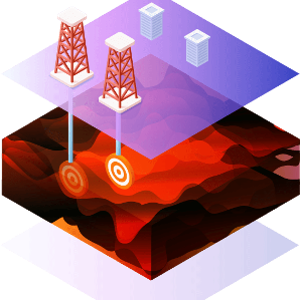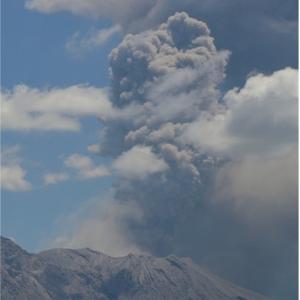Prof. Yan Lavallée
Professor und Inhaber des Lehrstuhls für Magmatische Petrologie und Vulkanologie

Professor und Inhaber des Lehrstuhls für Magmatische Petrologie und Vulkanologie

Born in Ville des Laurentides, Canada, I hold a B.Sc. (2001) in Earth and Planetary Sciences from McGill University (Canada), a M.Sc. (2003) in Space Studies from the University of North Dakota (USA), and a Dr.Rer.Nat. (2008) in Mineralogy from the Ludwig-Maximilians-Universität München (Germany). Between 2012 and 2022 I was Chair of Volcanology and Magmatic Processes at the University of Liverpool (UK) and in 2022 I was appointed Chair of Magmatic Petrology and Volcanology at the LMU-Munich.
Internal
External
2018 Elected member of the Academia Europaea (AE)
2017 Fellow of the American Geophysical Union (AGU)
2017 James B. Macelwane Medal of the American Geophysical Union
2017 Wager Medal of the International Association of Volcanology and Chemistry of the Earth’s Interior (IAVCEI)
2009 Finalist to the Deutscher (Körberstiftung) Studienpreis in Germany
2009 Leopold Gélinas Gold Medal in the field of volcanology and igneous petrology in Canada
My research primarily focuses on the rheological and mechanical description of magma and rocks, and their impact on volcanic, magmatic, earthquake, geothermal and planetary processes. My work integrates geological field techniques to geophysics, petrology, geochemistry, and material science to advance the models of the Earth.

The rheological (flow) properties of magma control magmatic and volcanic processes. The mobility of magma is imparted by the exsolution of volatile gases—mainly H₂O, CO₂, and SO₂— into gas bubbles which provides buoyancy; in contrast magma crystallisation increases the resistance to shear. Ultimately the properties of magma are key to volcanic eruptions, geothermal activity, and planetary differentiation. The exsolution of volatiles into gas bubbles power magma buoyancy and drive eruptions, controlling eruption style and intensity. In geothermal systems, volatiles affect heat transport, fluid flow, and mineralization, making them vital for resource exploration. We conduct experimental and numerical work to resolve the development and behaviour of gas bubbles and crystals in magma (including nucleation, growth, deformation (inc. crystal plasticity), coalescence, and outgassing), and constrain the properties (viscosity, permeability, strength) of bubble- and crystal-bearing magmas as they flow or fragment explosively.
Lavallée Y., Kendrick J.E. (2021): A review of the physical and mechanical properties of volcanic rocks and magmas in the brittle and ductile field. In: Forecasting and Planning for Volcanic Hazards, Risks, and Disasters. Vol. 2 in Hazards and Disasters (Ed. Papale P.). Elsevier. 153-238..
Lavallée Y., Kendrick J.E. (2022): Strain Localisation in Magmas. In: Geological Melt (Eds: Neuville D.R., Henderson G.S., Dingwell D.B.). Reviews in Mineralogy and Geochemistry 87, 1088p..
Lavallée, Y., Miwa, T., Ashworth, J. D., Wallace, P. A., Kendrick, J. E., Coats, R., Lamur, A., Hornby, A., Hess, K.-U., Matsushima, T., Nakada, S., Shimizu, H., Ruthensteiner, B., and Tuffen, H. (2022): Transient conduit permeability controlled by a shift between compactant shear and dilatant rupture at Unzen volcano (Japan), Solid Earth, 13, 875–900, https://doi.org/10.5194/se-13-875-2022.

Creating a magma observatory by drilling two wells into magma to sample, instrument, monitor and manipulate magma.
The Krafla Magma Testbed (KMT) is a pioneering geothermal and volcanological research initiative centred at the Krafla volcano (Iceland), one of a few places where we know the location of magma in Earth’s crust. During the 2009 IDDP-1 well project, magma was unexpectedly encountered at a depth of 2.1 km, opening new possibilities for scientific access to magma. The KMT aims to develop an international infrastructure for repeated, controlled drilling into magma to study its properties, interactions with surrounding rock, and the role of volatiles in eruption dynamics and geothermal energy. This unique testbed will support multidisciplinary research, advancing our understanding of magma behaviour, improving eruption forecasting, and exploring the potential of superhot geothermal energy. KMT also serves as a natural laboratory for studying processes relevant to planetary interiors and the evolution of terrestrial planets, offering global insights into deep Earth and planetary systems.
Running project:
Lavallée Y., Kendrick J.E., Eichelberger J.C., Papale P., Sigmundsson F., Dingwell D.B. (2025): Accessing Magma: A Necessary Revolution in Earth Sciences and Renewable Energy. European Review 32 (No. 4), 412–434.
Wadsworth F.B., Vasseur J., Lavallée Y., Hess K.-U., Kendrick J.E., Castro J., Weidendorfer D., Rooyakers S.M., Foster A., Jackson L.A., Kennedy B.M., Nichols A.R.L., Schipper C.I., Scheu B., Dingwell D.B., Watson T., Rule G., Witcher T., Tuffen H. (2024): The rheology of rhyolite magma from the IDDP-1 borehole and Hrafntinnuhryggur (Krafla, Iceland) with implications for geothermal drilling. Journal of Volcanology and Geothermal Research 455, 108159.

© Yan Lavallée
Volcanic ash and sulphur compounds, particularly sulphur dioxide (SO₂), play a significant role in the Earth's climate system. During explosive eruptions, sulphur dioxide interacts with volcanic ash to form salts, which precipitate on the surface of ash particles. The process is efficient and can result in the uptake of ~50% of sulphur from volcanic plumes, thus jeopardising our volatile budget measurements using gas emission analysis. Here we conduct experiments to quantitatively constrain the interaction of volcanic ash with sulphur in order to develop more adequate climate impact simulations.
Running project:
Volcanic emission of gases from magma (e.g., CO₂, H₂O, SO₂, and other volatiles), plays a central role in shaping planetary atmospheres, including those of exoplanets. On Earth, volcanic degassing has contributed significantly to the development of our atmosphere and climate, influencing both habitability and geological processes. Similarly, the study of volcanic activity and degassing on exoplanets provides insights into their potential for hosting life and their geological evolution. For rocky exoplanets, volcanic emissions could contribute to the atmosphere, which may influence surface temperature, cloud formation, and long-term climate stability. In order to resolve the potential occurrence of volcanism and magmatism on exoplanets, we must experimentally assess the behaviour of volatile gas in magmas at extraordinary conditions experienced in exoplanets. Understanding these processes on Earth enhances our models of exoplanetary atmospheres and guides the search for habitable worlds beyond our solar system.
Upcoming project:
The colonisation of space requires the development of habitats, reliant on novel engineering practices. Amongst the different solutions envisaged, sintering lunar regolith (the process of heating and fusing lunar soil particles to form solid materials) can promote sustainable habitats by creating strong, durable structures on the Moon, reducing the need to transport materials from Earth. Developing such solutions is key to overcome logistical challenges of space exploration; it enables the creation of self-sufficient habitats that can withstand extreme temperatures, micrometeorite impacts, and solar radiation. Sintering methods need to be tailored to the local rock properties; hence, we experimentally test the properties of different lunar materials and develop numerical models to precisely engineer material. Lunar regolith sintering will establish more cost-effective solutions for human presence on the Moon, paving the way for future missions to Mars and beyond.
Running project:
Volcanic edifices are inherently unstable construct, developed over rapid geological timescales. During the lifespan of a volcano, the structural stability of the edifice is challenged by magmatic, volcanic, tectonic, oceanic and atmospheric processes, which can result in catastrophic collapse and even generation of tsunamis in coastal environments. We study the mechanical properties of volcanic materials (coherent lavas and volcaniclastic systems) and the loading conditions (stress, earthquake shaking, rain) leading to rupture; we also conduct field analysis and frictional test to elucidate the controls on the development of landslides.
Hughes A., Kendrick J.E., Salas G., Wallace P., Legros F., Di Toro G., Lavallée Y. (2020): Shear localisation, strain partitioning and frictional melting in a debris avalanche generated by volcanic flank-collapse. Journal of Structural Geology 140:104132.
Lamur A., Kendrick J.E., Schaefer L.N., Lavallée Y., Kennedy B.M. (2023): Damage amplification during repetitive seismic waves in mechanically loaded rocks. Nature, Special volume: Forecasting volcanic events of Scientific Reports. 13: 1271. doi.org/10.1038/s41598-022-26721-x
Zorn E.U., Kendrick J.E., Lamur A., Birnbaum J., Kueppers U., Muniz da Silva M., Lavallée Y. (2024): Experimental investigation of volcaniclastic compaction during burial. Volcanica, DOI: 10.30909/vol.07.02.765783.

© Jackie Kendrick
Earthquakes takes place when the rocks rupture due to an excess of stress, prompting slip of the broken rocks along fault system. We employ laboratory experiments to study rupture and slip processes and understand the complex mechanisms that underly active faults leading to of earthquakes. We use laboratory experiemnts to simulate material rupture as well as fault movements under controlled conditions, constraining the mechanical properties of rocks (strength, friction) and how they evolve during rupture events. In particular we study the development of frictional melting, where heat generated by slipping causes partial melting along fault surfaces. Laboratory experiments allow for precise control of conditions (temperature, stress, and slip rate) leading to frictional melt, depending on the local rock types. Upon melting, the properties of the frictional melt control the fault slip and the dislacement during an earthquake. Understanding these processes helps improve earthquake models, predict fault behavior, and assess seismic hazards. By linking laboratory findings to real-world seismic data, we aim to gain deeper insight into the physics of faults in a range of tectonic and volcanic environments.
Running project:
Wallace P.W., De Angelis S.H., Kendrick J.E., Hornby A., Clesham S., von Aulock F.W., Hirose T., Dingwell D.B., Lavallée Y. (2019): Frictional melt homogenisation during fault slip: Geochemical, textural and rheological fingerprints. Geochimica et Cosmochimica Acta 255, 265-288.
Hughes A., Kendrick J.E., Lamur A., Wadsworth F.B., Wallace P.A., Di Toro Gi., Lavallée Y. (2020): Frictional behaviour, wear and comminution of synthetic porous geomaterials. Frontiers in Earth Science: Earth and Planetary Materials 8:488.
Kendrick J.E., Lavallée Y. (2022): Frictional melting in magma and lava. In: Geological Melts (Eds: Neuville D.R., Henderson G.S., Dingwell D.B.). Reviews in Mineralogy and Geochemistry 87, 1088p.
0:41 | 17.07.2025 | ©Jackie Kendrick